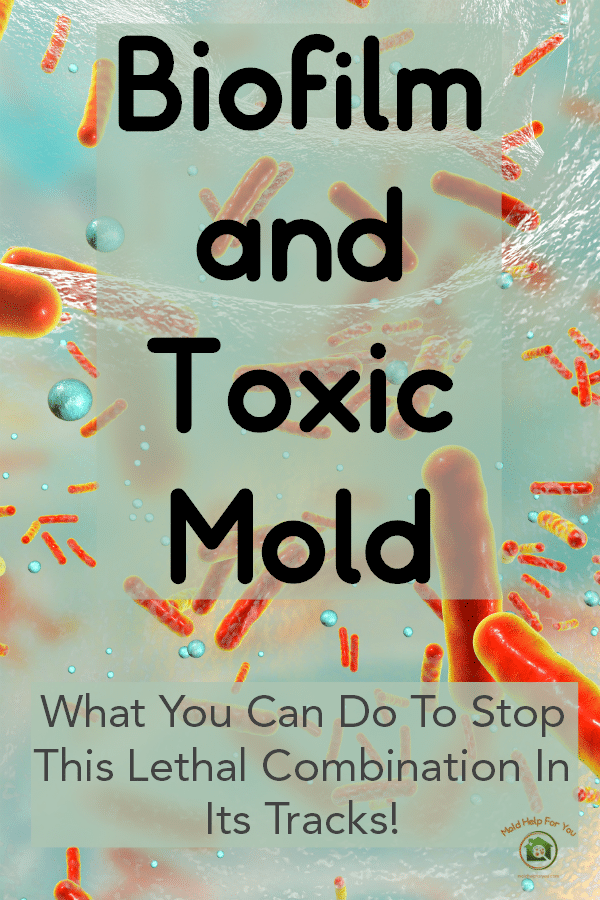Biofilm and Mold
This post may contain affiliate links. Read our full disclosure.
Mold lives in biofilm.
Bio what?
Biofilm.
What the heck is Biofilm and what does that have to do with mold? Mold is a fungus that grows on varies organic and inorganic substrates. Where does Biofilm fit into all this?
What Is Biofilm?
You may have not heard the term Biofilm, but it’s something that you encounter every day. The plaque on your teeth and the slimy gunk that clogs your drains are two examples of biofilm.
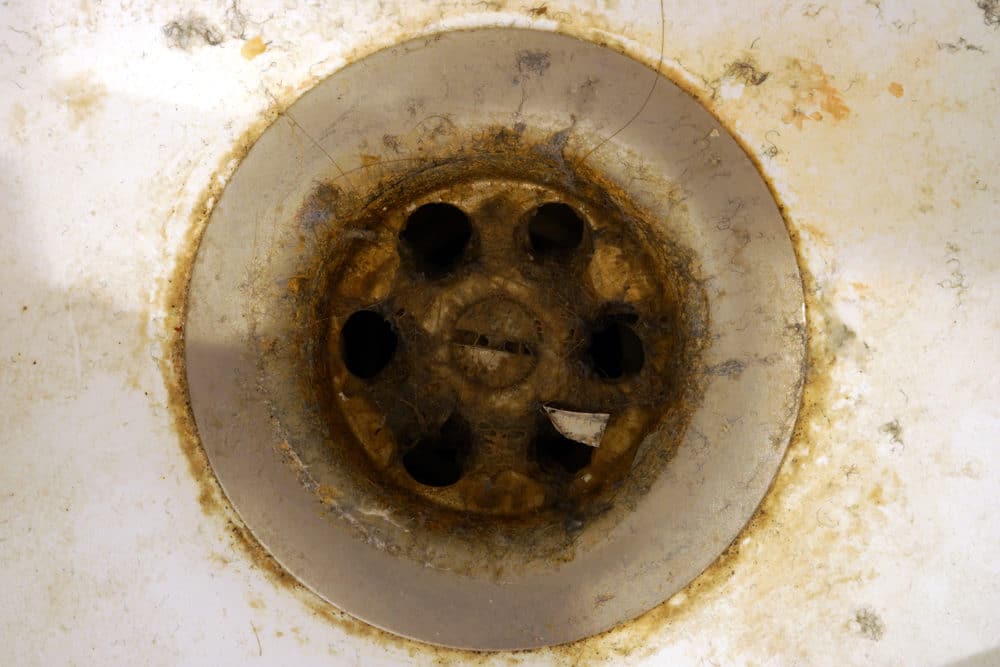
Biofilm is produced in 5 stages and is any group of microorganisms (such as bacteria, yeasts, fungi, and protozoa) in which cells stick to each other on a surface. These adherent cells are frequently embedded within a self-produced matrix of extracellular polymeric substance (EPS).
Biofilms are not just dense accumulations of bacterial cells. They have elaborate functional structures, inside and out, that serve the cells’ collective destiny.
Even more technically, Biofilm is a layer of bacteria, their secretions, and their waste products. It accumulates on every surface that is exposed to water (even if only periodically) and contains nutrients that support bacterial life. Biofilms can also form on soft tissues in living organisms.
Unlike humans, bacteria can consume iron compounds, sulfates, organic matter such as sloughed off skin or other dead micro-organisms, and a wide variety of other materials. They create incredibly “sticky” glue-like substances to attach themselves to living or inert surfaces and to one another. The combination of bacteria, their byproducts, and the adhesive polysaccharides and proteins they make constitute a biofilm. Without bacteria, biofilm cannot exist.
Their structural and physiological complexity allows them to coordinate activities and cooperate as a group, similar to multicellular organisms. Once biofilm forms, bacteria can’t leave the surface, and when new bacteria are produced they remain protected inside this sticky fortress. Biofilm communities provide several advantages to their members including ready access to food and nutrients. Biofilm bacteria can also be up to a thousand times more resistant to antimicrobial stress than free-swimming bacteria of the same species.
Any of that make sense?
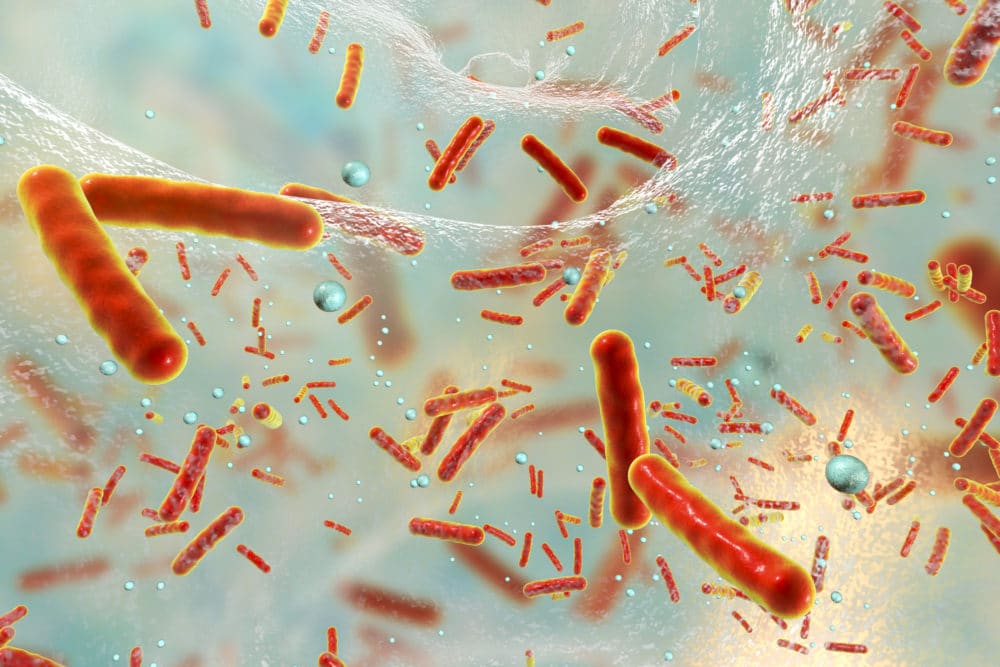
The simple definition of biofilm is that it is a protective coating for an organism.
Biofilm is a way microorganisms protect each other and survive against things like chemicals and cleaning products. Biofilm is also referred to as slime, although not everything described as slime is a biofilm.
Biofilms have established themselves in such environments for a very long time. Fossil evidence of biofilms dates to about 3.25 billion years ago, according to a 2004 article published in the journal Nature Reviews Microbiology. For example, biofilms have been found in the 3.2 billion-year-old deep-sea hydrothermal rocks of the Pilbara Craton in Australia. Similar biofilms are found in hydrothermal environments such as hot springs and deep-sea vents.
Biofilms in Your Home
You definitely share your living space with many biofilms. Biofilms readily colonize many household surfaces in the bathroom and kitchen, including sinks, toilets and countertops. Here are some specific areas they typically inhabit. This is by no means a comprehensive list.
- Countertops
- Sinks
- Sink drain pipes
- Sink strainer
- Garbage disposal
- Faucet cartridges
- Sponges
- Cutting boards
- Food processors
- Coffee pots
- Water bottles
- Water filters
- Toilets
- Bathtubs and Showers
- Shower head
- Shower curtains
- Washing machines
- Air system vents
- Floors
- Toothbrushes
- Pet food and water bowls
- Pacifiers
- Remote controls
- Door knobs
- Reading glasses
- Cell phones
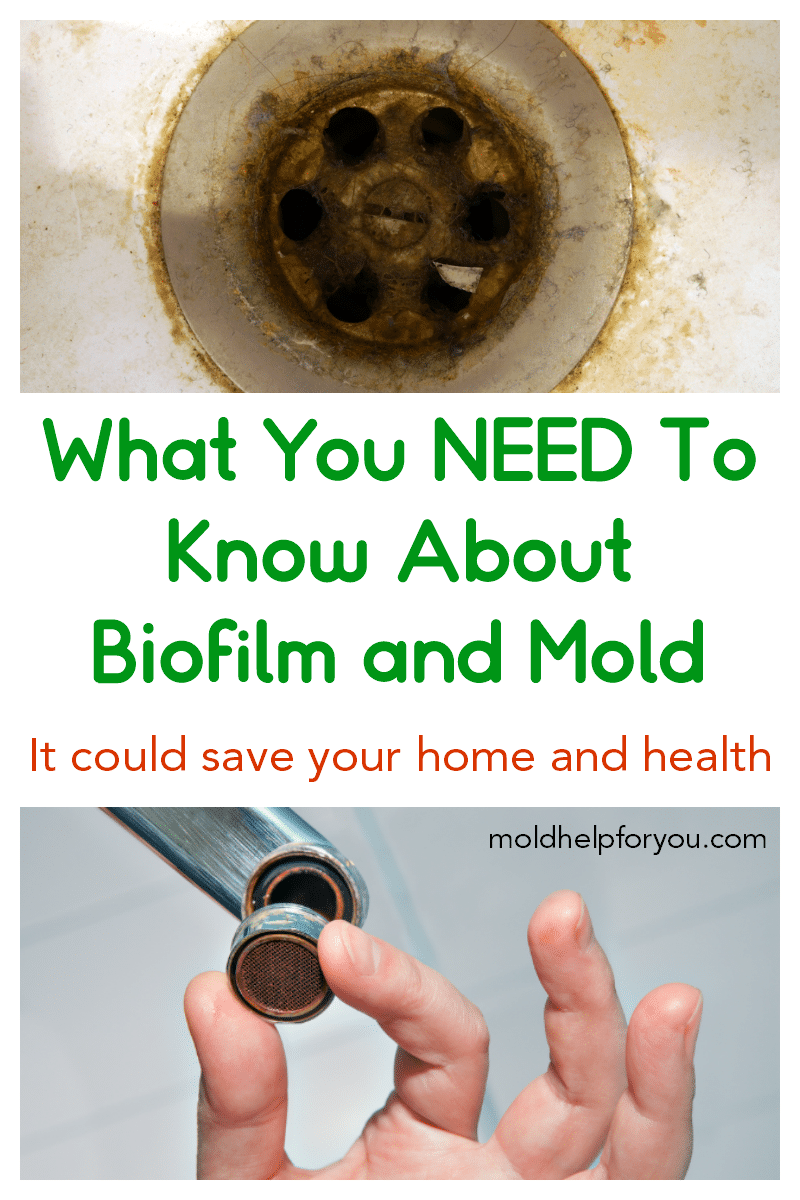
Biofilm and Mold
Like I said at the beginning, mold lives in biofilm. It thrives in biofilm. It reproduces in biofilm. It finds safety in biofilm. It knows that it stands a pretty good chance of surviving in biofilm. However there is a huge BUT coming…
While a few types of mold can form their own biofilms and a few inhabit bacterial biofilms, molds generally do not grow in or even on the surface of biofilms. This is because there is generally too much water for their tastes. Sounds odd seeing how molds like moisture right? But the majority of molds don’t readily grow underwater. The strongest biofilms are under water or in significantly wet conditions at least most of the time.
Beyond that, many molds produce mycotoxins. This means that they don’t actually NEED the protection of biofilms. When the competition for space and nutrients occur, some molds produce mycotoxins to wipe out the competition.
Mold really is so complex and so much can vary between the various types of mold. The most typical scenario in which you will find mold in biofilm or molds creating a biofilm is when you see mold growing on something you wouldn’t think it could or should grow on like plastic, tile, or glass. In these instances mold may be growing on and in the biofilms that are coating these substrates.
We know for certain that aspergillus fumigatus lives happily and successfully in biofilm. Beyond that, it’s a crapshoot.
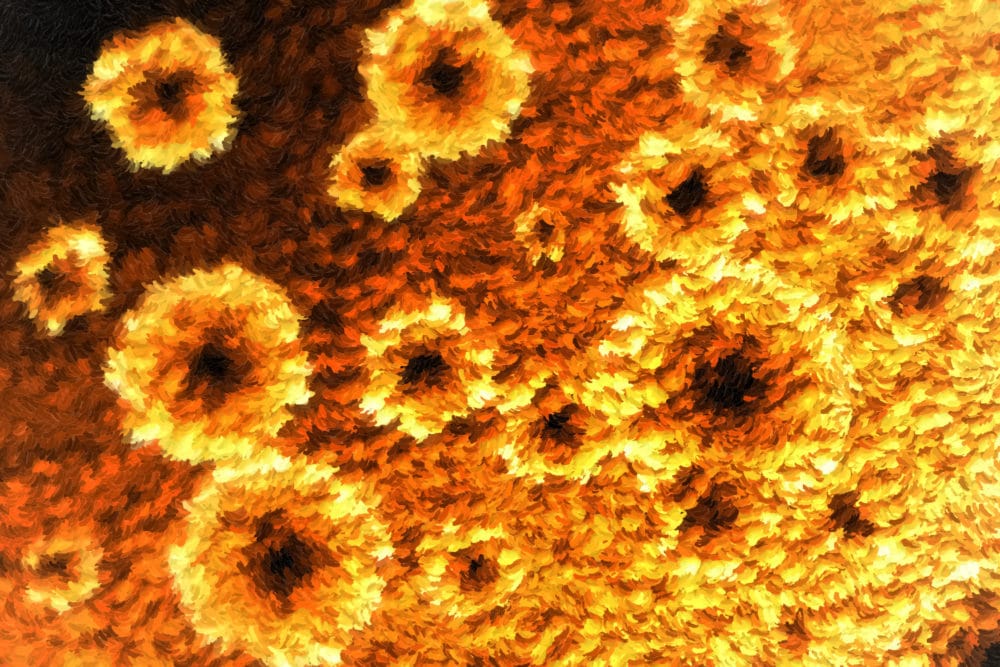
How to Clean Biofilm
Aside from the fact that you want to practice good mold prevention and NOT keep anything around that creates an environment that is hospitable for mold, you want to remove biofilms in an effort to keep your immune system strong and your health on point. Biofilms harbor so many nasties including viruses and bacteria that you want to keep out of your body.
According to the NIH (National Institute of Health) & the CDC (Center for Disease Control) 90% of harmful bacteria live in biofilm that cannot be cleaned away by the strongest disinfectant.
Did you read that? Biofilms cannot be cleaned or removed with traditional cleaners or cleaning methods. Even bleach and ammonia can’t break through the strong biofilm structure.
So how do you remove biofilms?
Probiotic cleaning is the safest and most effective way to tackle biofilm. Instead of using toxic chemicals that kill everything on the surface, turning the “dead bodies” into food that attracts more pathogenic bacteria, probiotic cleaners employ safe and beneficial bacteria that restore the natural microbial balance.
Millions of probiotic workers flood the surface, break down biofilm, hoard nutrients and moisture, and crowd out the bad bacteria. They provide a residual cleaning effect lasting three to five days, protecting your surfaces from invaders, without risking the health of your family or harming the environment.
I won’t reinvent the wheel as I wrote an entire post on probiotic cleaners and mold. I will send you over to read that and you can decide if you are going to incorporate probiotic cleaners into your every day cleaning and mold prevention strategy.
Sources
- https://www.quantamagazine.org/the-beautiful-intelligence-of-bacteria-and-other-microbes-20171113/
- http://www.jbc.org/content/291/24/12529.full
- https://www.livescience.com/57295-biofilms.html
- http://www.ncbi.nlm.nih.gov/sites/entrez?Db=pubmed&Cmd=DetailsSearch&Term=10334980%5Buid%5D
- https://www.hindawi.com/journals/ijmicro/2012/528521/
- https://cmr.asm.org/content/15/2/155
